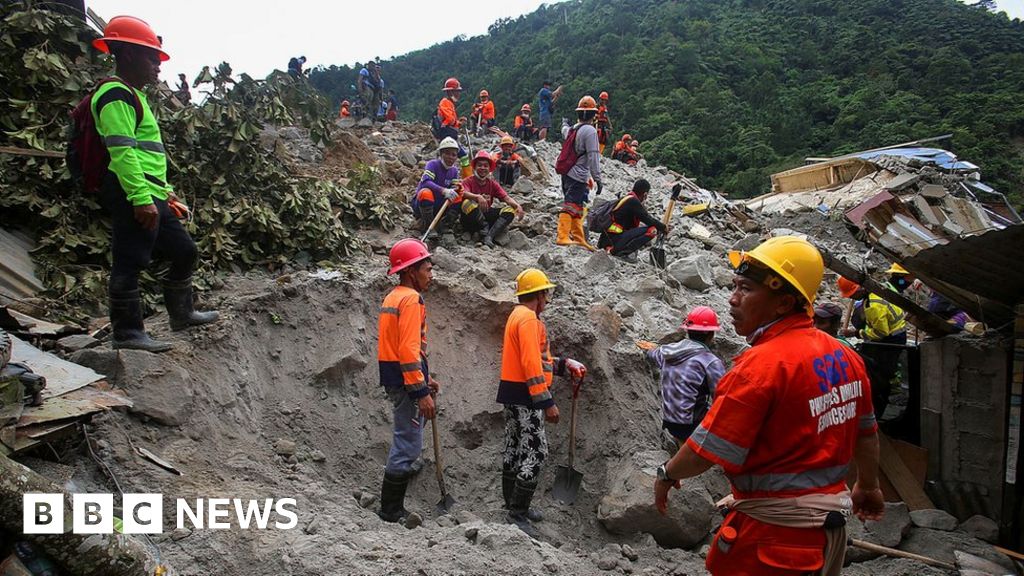In southern Philippines, a landslide struck Masara village in the province of Davao de Oro, killing 68 individuals. The incident, which occurred on February 6th, 2024, has left 51 others missing. A three-year-old girl was rescued from the debris on February 10, 2024. Her survival, against all odds.

Also Read: World First Time Surpasses 1.5°C Warming Limit Over 12 Month Period
It obliterated 55 homes and buried three buses and a jeepney, vehicles awaiting the arrival of workers from the gold mining company. The toll on human life is a big number, with 68 souls lost and 32 others left injured.
As the days pass, the focus changes from search and rescue to search and retrieval, an acknowledgment of the harsh reality that lies ahead.
The stench of decay permeates the air, a reminder of the urgency to expedite the recovery efforts and bring closure to the families.
The magnitude of the disaster leaves an area of approximately 50 meters deep yet to be combed through.
Landslides, unfortunately, are not unfamiliar phenomena in the Philippines, where the convergence of mountainous terrain, heavy rainfall, and deforestation creates a perfect storm of natural hazards.
The region’s susceptibility to such calamities is by the onslaught of heavy monsoon rains, triggering landslides and floods that displace tens of thousands, rendering them homeless.
The southern islands of the Philippines have also borne the brunt of seismic unrest, with a series of earthquakes rattling the region in recent months.
The impact of these catastrophic events has left people struggling with the challenges of rebuilding amidst the rubble of their many lives.
Also Read: European Union Unveils 2040 Climate Target, Amid Farmers Protests
The United States, through the US Agency for International Development, has pledged $1.25 million in humanitarian aid, underlining its commitment to standing shoulder to shoulder with the Filipino people in their hour of need.
Additionally, the US Defense Department has dispatched two C-130 cargo planes to facilitate the delivery of essential supplies to the beleaguered communities.
The landslide, triggered by weeks of torrential rains, buried homes, vehicles, and livelihoods under a deluge of mud and debris.
Among the casualties were residents of the village and employees of a nearby gold mining firm, whose lives were abruptly cut short as they awaited transportation home.
The scale of devastation was unfathomable, with more than 55 houses obliterated and multiple vehicles, including buses and a jeepney, swallowed by the earth.
Despite efforts by hundreds of rescuers who searched for survivors using primitive tools and heavy machinery, the window of hope grew narrower with each passing day.
While a few rescues, such as that of a three-year-old girl pulled from the rubble, briefly uplifted spirits, the consensus among authorities was one of resignation.
As the days wore on, the focus changed from rescue to recovery, an acknowledgment of the harsh truth that the chances of finding survivors dwindled with each passing moment.
The landscape of Masara village was forever altered, its vibrant people now reduced to a graveyard of broken dreams and shattered lives.
Families mourned the loss of loved ones, struggling with the pain of bidding farewell to those they held dear.
Also Read: California Storm: 3 Dead in Historic California Rain Event



/cloudfront-us-east-2.images.arcpublishing.com/reuters/VARSP6AJSNOY3O5NCOFYAATZAM.jpg)



















